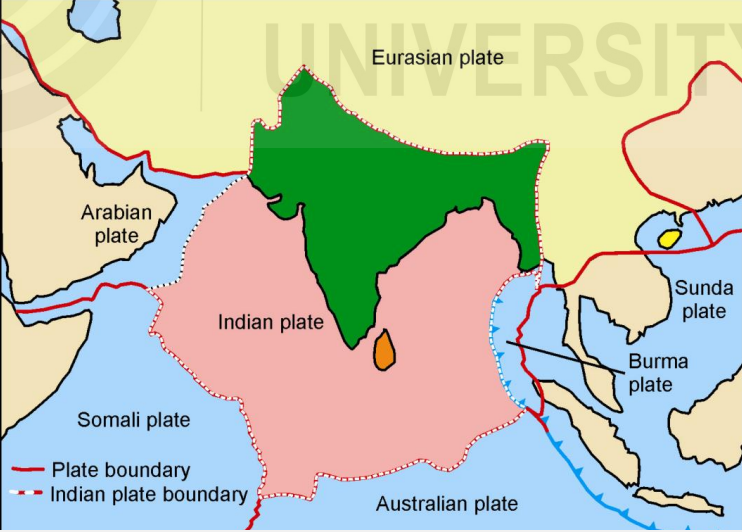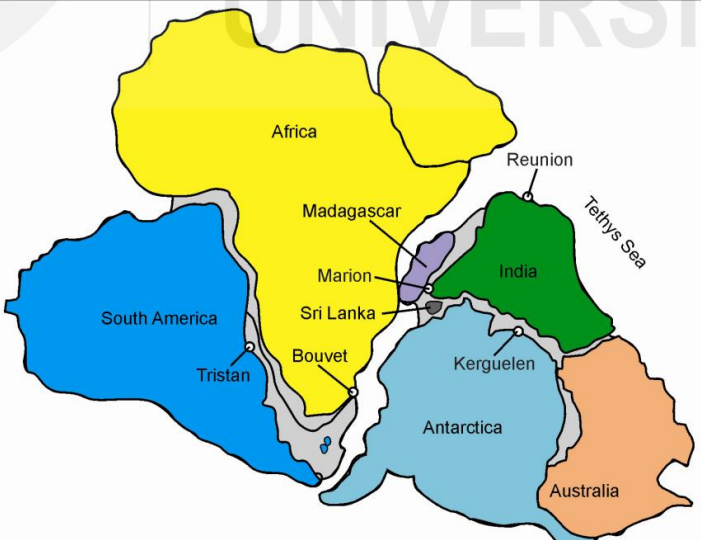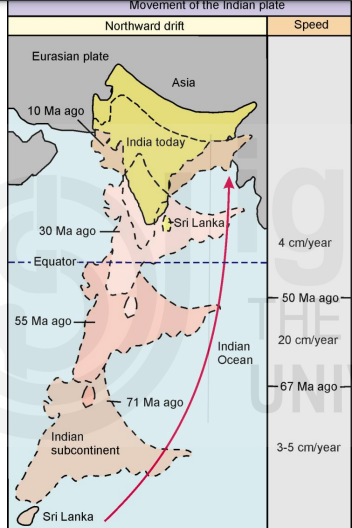Description

Disclaimer: Copyright infringement not intended
Context: Indian tectonic plate is breaking into two. It's happening beneath Tibet. This revelation was presented at the American Geophysical Union conference in San Francisco and offers a fresh perspective on the colossal Himalayan mountain range's formation.
Details
Previous assumptions
- For decades, geologists have known that the Himalayas owe their towering presence to the collision of the Indian and Eurasian continental plates.
- This process, which began around 60 million years ago, has been likened to the crumpling of a car's hood in a head-on collision, with the Indian plate being driven beneath its northern neighbor by the currents of molten rock within the Earth's mantle.
- Over time, this tectonic interaction has thrust the Eurasian land mass skyward, creating the planet's highest elevations.
Recent Findings
- The latest analysis challenges previous assumptions about the subduction of the buoyant Indian plate. Rather than sinking smoothly into the mantle's depths, the seismic data suggests a more complex scenario where the plate is delaminating.
- The dense base of the Indian plate is peeling away and descending into the mantle, while its lighter top portion continues to scrape just beneath the Eurasian plate.
- This new model of tectonic activity was pieced together by a team led by Ocean University of China geophysicist Lin Liu.
- By combining 'up-and-down' S-wave and shear-wave splitting data from 94 broadband seismic stations across southern Tibet with 'back-and-forth' P-wave data, the researchers have provided a nuanced view of the subterranean dynamics at play.
- The findings indicate that the Indian slab is neither gliding along nor crumpling uniformly but is undergoing a dramatic structural separation.
- Some sections of the plate appear relatively intact, while others are fragmenting approximately 100 kilometers below the surface, allowing the base to deform into the Earth's fiery core.
- This seismic investigation aligns with geological models based on helium-3 enriched spring water and patterns of fractures and earthquakes near the surface. Together, these pieces of evidence paint a picture of tectonic turmoil deep beneath the Himalayas.

Tectonic Plates
- The concept of Tectonic Plates was first introduced in 1967.
- A tectonic plate is a massive, irregularly-shaped slab of solid rock, generally composed of both continental and oceanic lithosphere.
- Plate thickness also varies greatly, ranging from less than 15 km for young oceanic lithosphere to about 200 km or more for ancient continental lithosphere (for example, the interior parts of North and South America).
- A tectonic plate may be a continental plate or an oceanic plate, depending on which of the two occupies the larger portion of the plate.
- The Pacific plate is largely an oceanic plate whereas the Eurasian plate is a continental plate.
Indian Tectonic Plate:
- The Indian Plate, sometimes known as the India Plate, is a minor tectonic plate.
- It is bound by four major tectonic plates. North of the Indian plate is the Eurasian plate; to the south east is the Australian plate; to the south-west is the African plate; and to the west is the Arabian plate.

Indian plate movement
- About 200 million years ago, when the supercontinent Pangaea began to break apart, the landmass India existed as a large island off the coast of Australia.
- The Indian plate began to move northward, moving as much as 9 cm/year and eventually ramming into the Eurasian plate.
- The collision marked the beginning of the formation of the Himalaya Mountains as Earth’s crust buckled and heaved upward.
- The Indian plate continues to move to the northeast at roughly 5 cm/year, pushing the Himalayas higher as the Indian plate underthrusts the Eurasian plate.
- On the opposite side, the Indo-African boundary is divergent.
- The western Indo-Arabian boundary is lateralrelative to each other, giving rise to a transform boundary.
- It was previously thought that the Indian and Australian platesformed one single plate as there is no clear type of boundary but recent seismologic evidence suggests that the two plates will have a transform boundary, as the drift velocities of these two plates are different even if the general direction of motion of the two plates is similar.
- It is this interaction which causes frequent earthquakes in the Himalaya and adjoining region.

Conclusion
- The implications of this study are profound, not only for our understanding of mountain formation but also for earthquake prediction methods. With a clearer three-dimensional image of how tectonic plates interact, scientists can better comprehend the Earth's surface evolution and potentially forecast seismic events with greater accuracy.
|
PRACTICE QUESTION
With reference to the theory of plate tectonics, discuss the various types of plate tectonic boundaries around the world. (250 words)
|


















